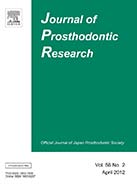Volume 56, Issue 2
Displaying 1-11 of 11 articles from this issue
- |<
- <
- 1
- >
- >|
Original articles
-
2012 Volume 56 Issue 2 Pages 71-86
Published: 2012
Released on J-STAGE: July 31, 2012
Download PDF (815K) -
2012 Volume 56 Issue 2 Pages 87-92
Published: 2012
Released on J-STAGE: July 31, 2012
Download PDF (469K) -
2012 Volume 56 Issue 2 Pages 93-101
Published: 2012
Released on J-STAGE: July 31, 2012
Download PDF (962K) -
2012 Volume 56 Issue 2 Pages 102-109
Published: 2012
Released on J-STAGE: July 31, 2012
Download PDF (825K) -
2012 Volume 56 Issue 2 Pages 110-119
Published: 2012
Released on J-STAGE: July 31, 2012
Download PDF (1640K) -
2012 Volume 56 Issue 2 Pages 120-124
Published: 2012
Released on J-STAGE: July 31, 2012
Download PDF (515K) -
2012 Volume 56 Issue 2 Pages 125-129
Published: 2012
Released on J-STAGE: July 31, 2012
Download PDF (415K) -
2012 Volume 56 Issue 2 Pages 130-135
Published: 2012
Released on J-STAGE: July 31, 2012
Download PDF (586K) -
2012 Volume 56 Issue 2 Pages 136-141
Published: 2012
Released on J-STAGE: July 31, 2012
Download PDF (475K)
Review
-
2012 Volume 56 Issue 2 Pages 142-146
Published: 2012
Released on J-STAGE: July 31, 2012
Download PDF (837K)
Technical procedure
-
2012 Volume 56 Issue 2 Pages 147-150
Published: 2012
Released on J-STAGE: July 31, 2012
Download PDF (1307K)
- |<
- <
- 1
- >
- >|
